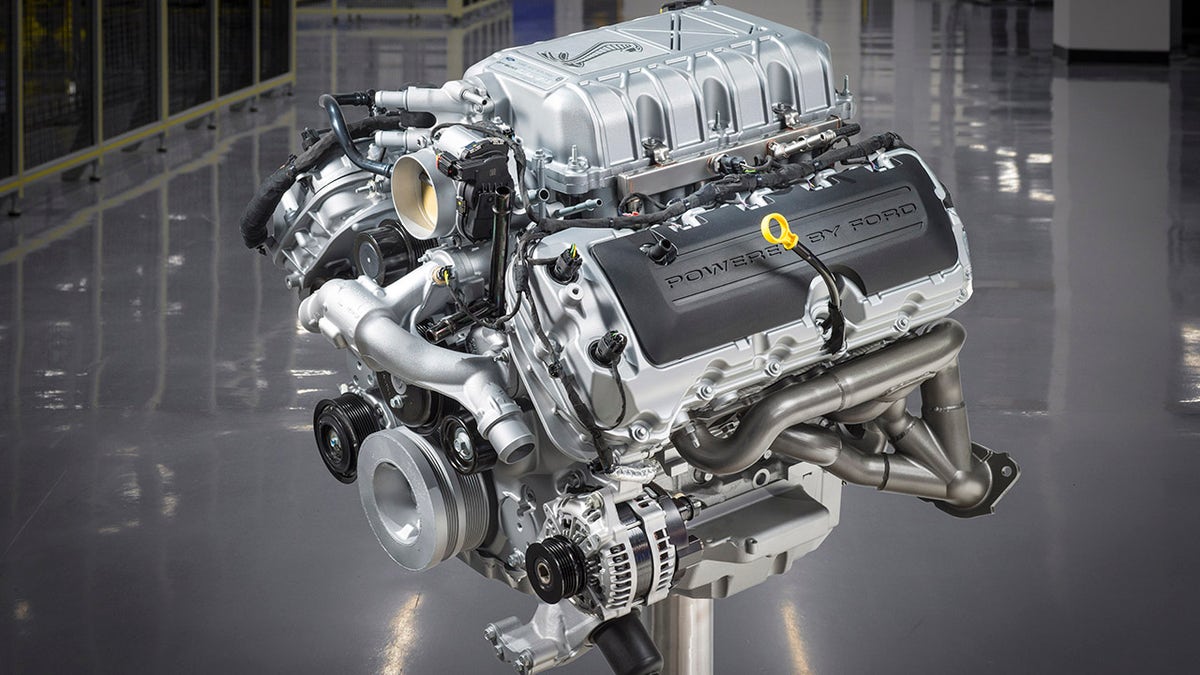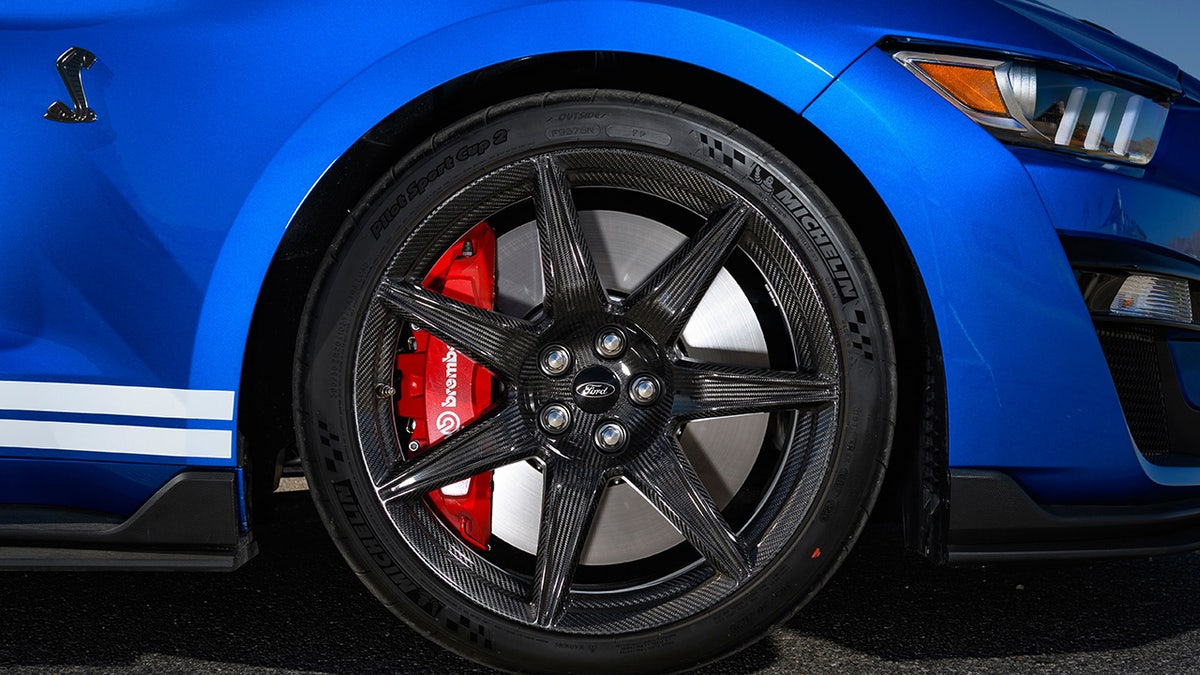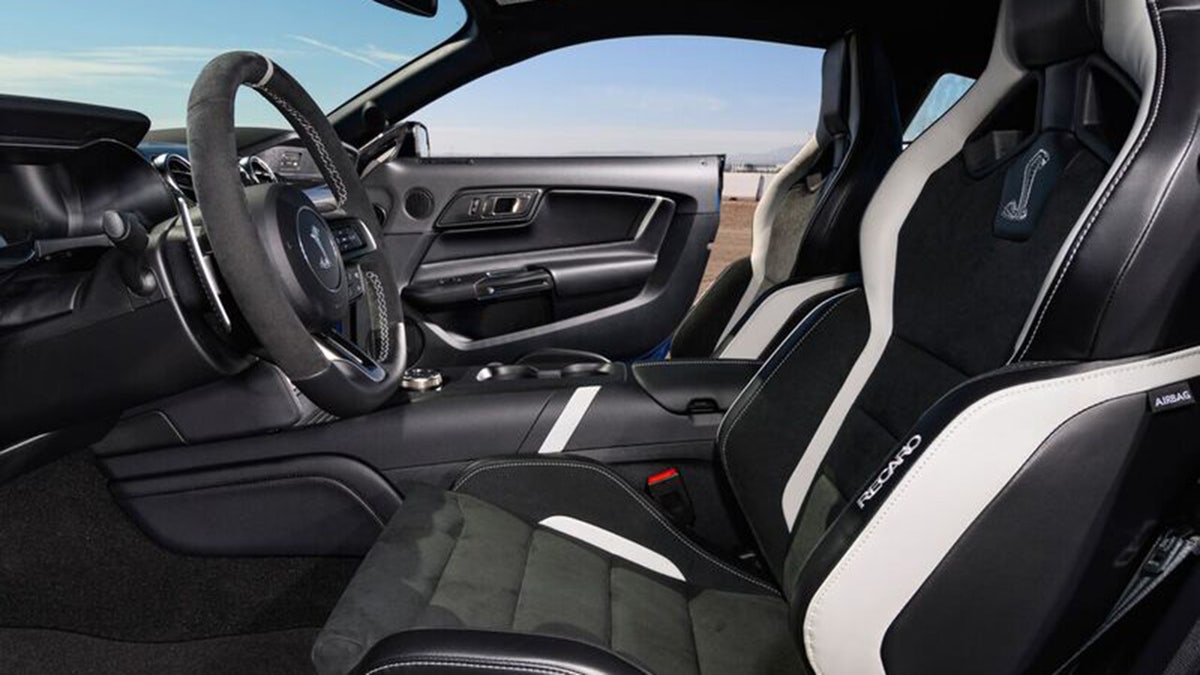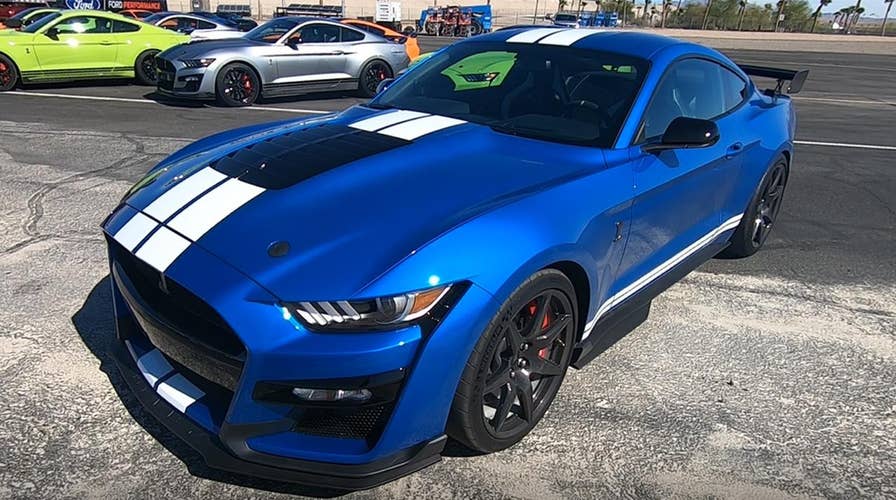2020 Ford Mustang Shelby GT500 test drive
The 2020 Ford Mustang Shelby GT500 is no one-trick pony. The most powerful Ford ever is as happy on a twisty track as it is on a drag strip, Fox News Automotive Editor Gary Gastelu says.
The 2020 Ford Mustang Shelby GT500 is a forgettable car.

(Ford)
That is to say, it takes about 10 seconds of driving it on a racetrack to nearly forget you’re in a Mustang.
Not a drag strip, mind you, but a twisty road course. In this case, the one outside of the Las Vegas Motor Speedway’s NASCAR oval, where Ford debuted the all-new GT500. The way it accelerates, turns and stops is uncannily effortless for a model that has traditionally been a burly bruiser.
That’s what previous GT500s were, going back to the 1967 original. Driving one, even the latest 2013-2014 edition, made you feel like Wile E. Coyote with an Acme rocket strapped to the roof. With a 760 hp supercharged 5.2-liter V8 nicknamed the Predator under the hood, the new GT500 has more power than any that’s come before it, but harnesses with technology that seems alien to the Mustang.

The Predator is based on the Voodo engine used by the Shelby GT350. It features a stronger block, trades the Voodo's flat-plane crank for a cross-plane crank and has a 2.65-liter supercharger strapped to the top of it. (Ford)
At its starting price of $73,995, the GT500 is equipped with foot-wide Michelin Pilot Cup Sport 4S tires, computer-controlled MagneRide shock absorbers that can adjust their stiffness 1,000 times per second and a seven-speed dual-clutch transmission that changes gears in eight-hundredths of one. Some will no doubt bemoan the lack of a stick-shift, but Ford doesn’t have one potent enough to handle the engine’s 625 lb-ft of torque and also wanted the GT500’s performance to be as accessible as possible, so the robots won.
Left to its own devices, the GT500 is capable of accelerating to 60 mph in 3.3 seconds and covering a quarter-mile in 10.7 seconds on its best day, according to Ford. Both figures are .1 seconds quicker than its rival, the bigger, heavier 797 hp Dodge Challenger SRT Hellcat Redeye can manage. It retains the Mustang’s line-lock feature that holds the car in place as you do a burnout to warm up the tires and a launch control system that makes it easy to get going and send the engine screaming to its 7,500 rpm redline between shifts.

(Ford)
Hit the brakes and the GT500’s 16.5-inch front and 14.5-inch rear discs stop it as if you’ve dropped an anchor equal to its 4,200 or so pounds, which is a couple of hundred more than any other Mustang.
This sort of straight-line performance is great and all that, but the twist is how the GT500 handles the turns. The car has more vents in it than a building in spy movie, but they’re not just for cooling its monster motor and brakes. They also channel air through the body to reduce lift at speed. A $1,500 handling pack adds a set of aerodynamic whiskers to the front corners of the car and a Gurney flap on top of the rear spoiler to turn more of the air passing by them into downforce, while an $18,500 Carbon Fiber Track Pack cranks up the effect.

(Ford)
It completely swaps the rear spoiler for a giant wing designed after the one on the Ford Mustang GT4 racing car that helps the GT500 generate 550 pounds of downforce at its electronically restricted 180 mph top speed. Stickier summer-only Pilot Cup Sport 2 tires on lightweight carbon fiber wheels, deep Recaro front buckets and a rear seat delete that turns the GT500 into a two-passenger coupe are also included.
With this arsenal in place, the GT500 goes around curves as if it’s swinging at the end of a string. The grip and poise are uncanny. The faster you drive, the smaller and more nimble it feels. You find yourself attacking long sweepers and esses without a second thought, the way you would in something that started its life as a high-end sports car, not a $28,000 pony. When it does reach the limit, it leaves plenty of room for error as you reel it back in.

(Ford)
Much of the credit goes to an advanced traction and stability management system that allows you to floor the accelerator with much abandon and figures out how much power you really need in any situation. I didn’t try shutting it off, because I’m exactly the kind of mediocre, middle-age lowest common denominator driver the engineers were looking to keep safe when they programmed it, but the ones I spoke with said it’s faster if you don’t, anyway.
While many owners will no doubt tow their GT500s to the track with an F-Series truck Ford is happy to sell them on the side, I don’t think they’d mind driving it there much at all. The steamroller tires add some noise, but there isn't any annoying tramlining to deal with and the firm ride is perfectly acceptable on the road.
CLICK HERE TO GET THE FOX NEWS APP
That said, be sure to plan for a few extra stops for gas. The GT500’s fuel economy is a pretty dismal 12 mpg city and 18 mpg highway, while the Challenger SRT Hellcat Redeye manages 13 mpg and 22 mpg, the latter thanks in part to a higher top gear ratio.
But there’s a different kind of fluid on the options list that will make your gas bill look cheap. Along with the regular $1,000 decals, Ford is offering a limited number of GT500 with hand-painted racing stripes for $10,000. They don’t make the car any faster, but they may be worth their weight in gold if you send it across the auction block someday.
I’m sure you’ll always remember it fondly if you do.
----------
2020 Ford Mustang Shelby GT500
Base price: $73,995
Type: 4- or 2- passenger, 2-door rear-wheel-drive coupe
Engine: 5.2-liter supercharged V8
Power: 760 hp, 625 lb-ft torque
Transmission: 7-speed automatic
MPG: 12 city/18 hwy
